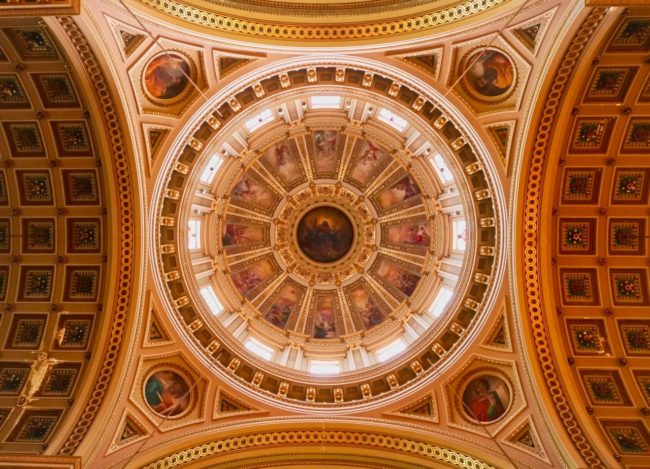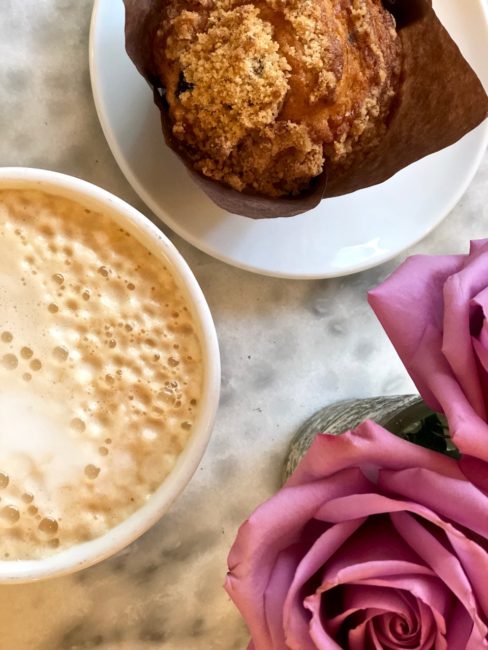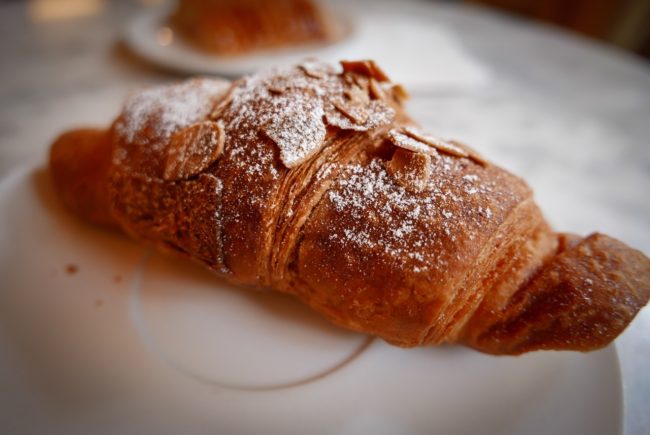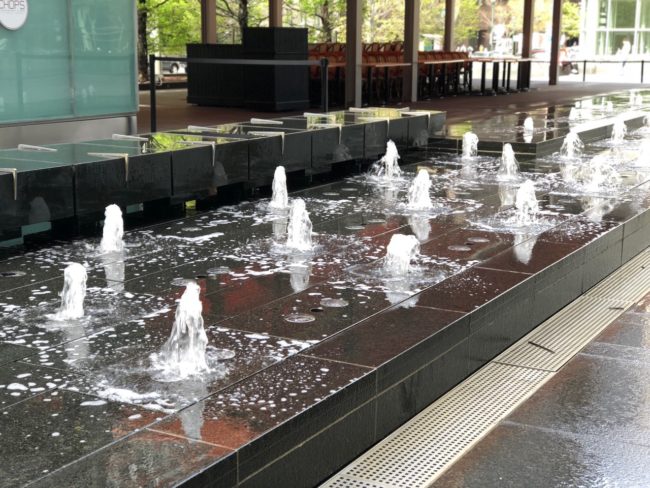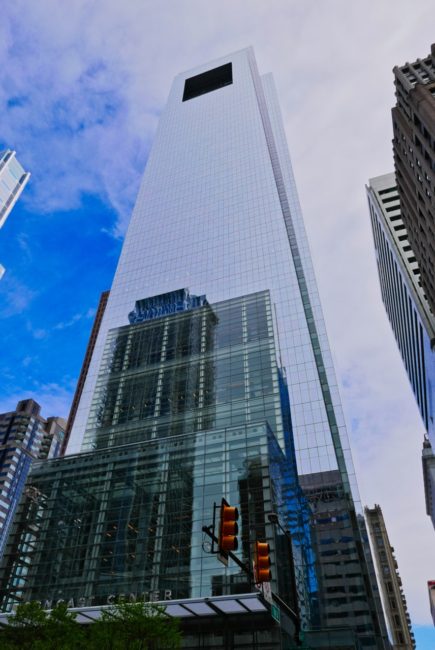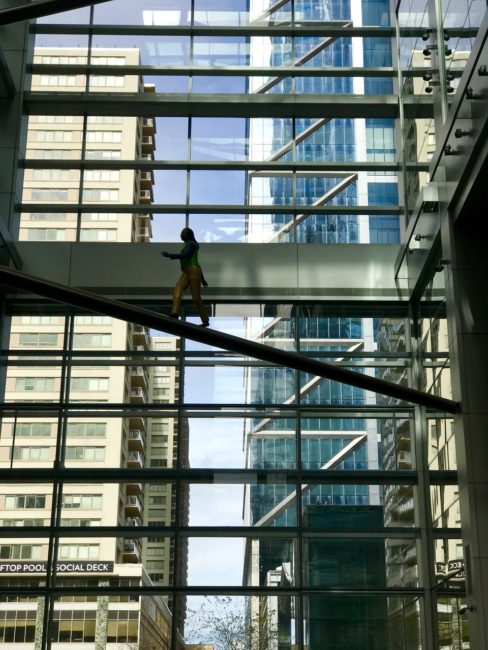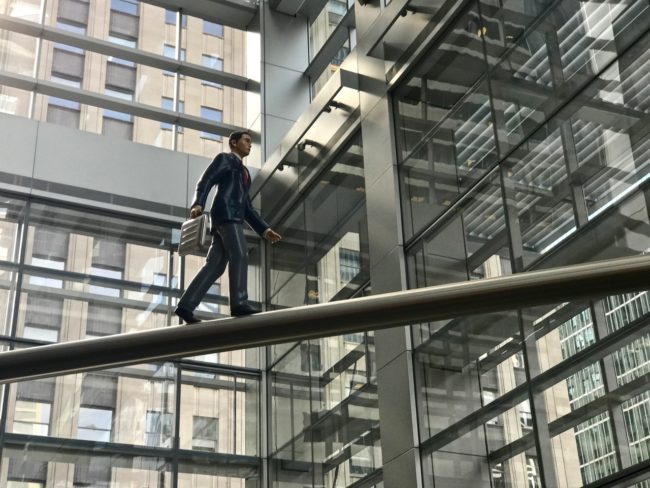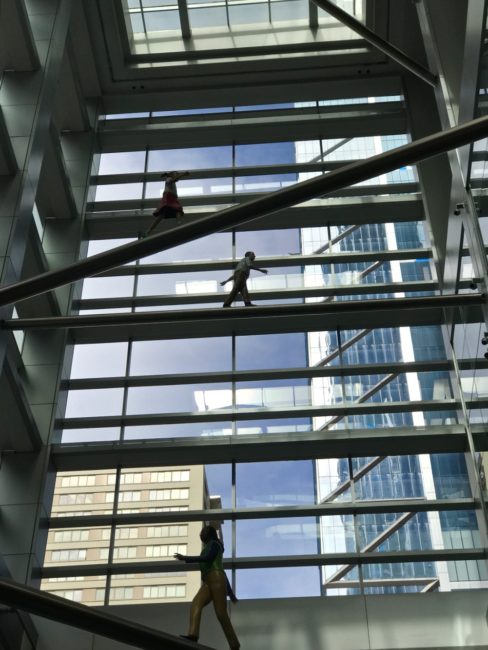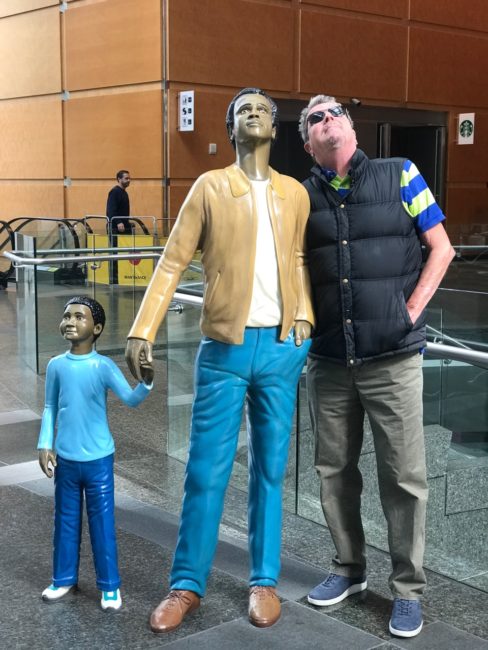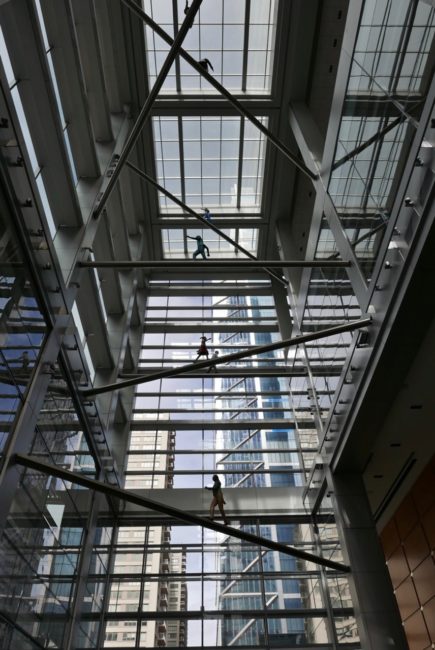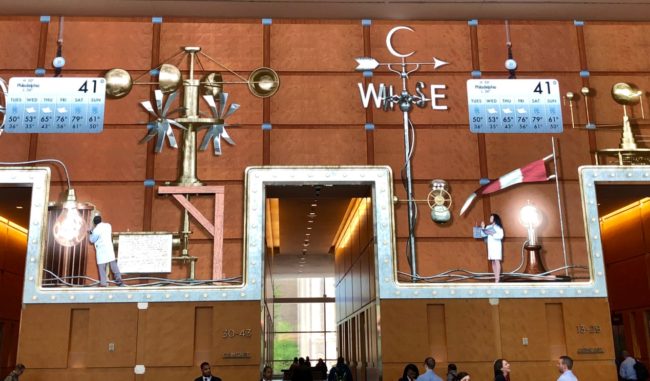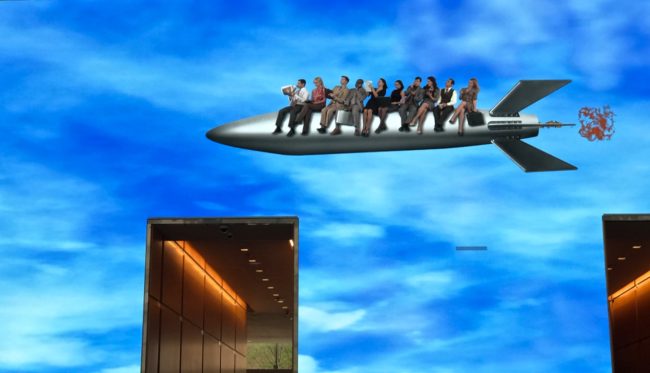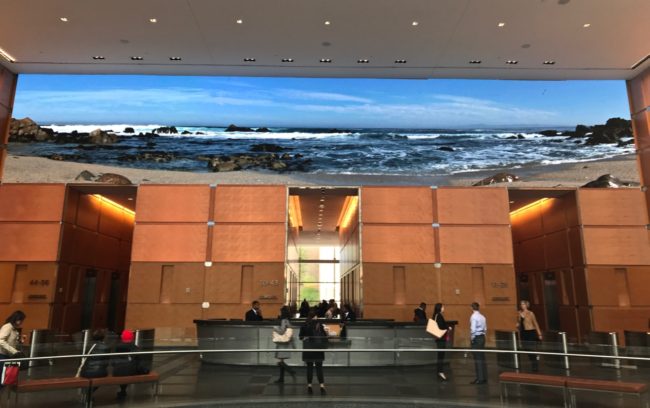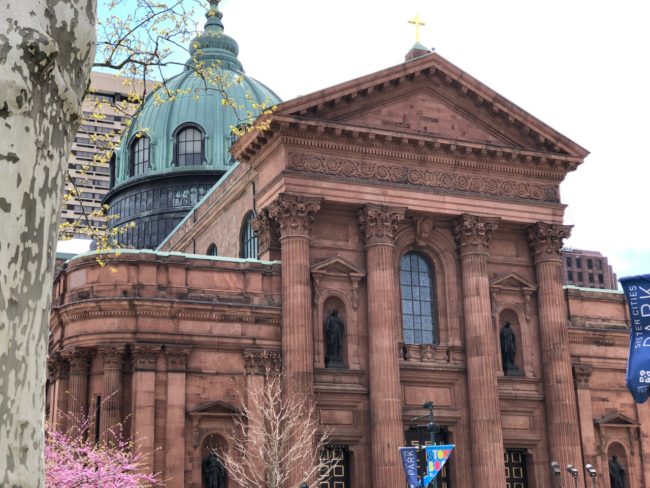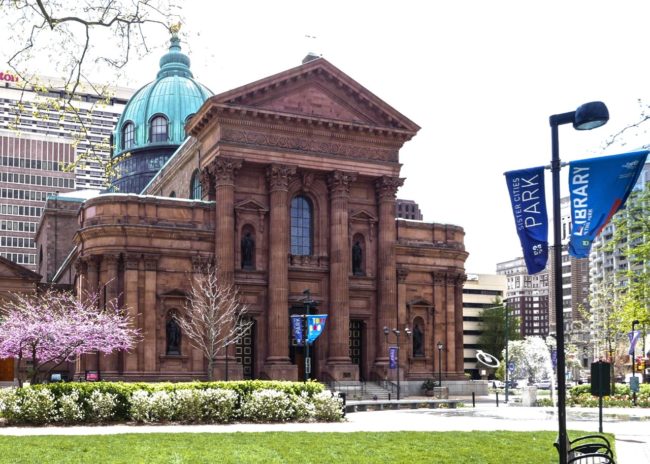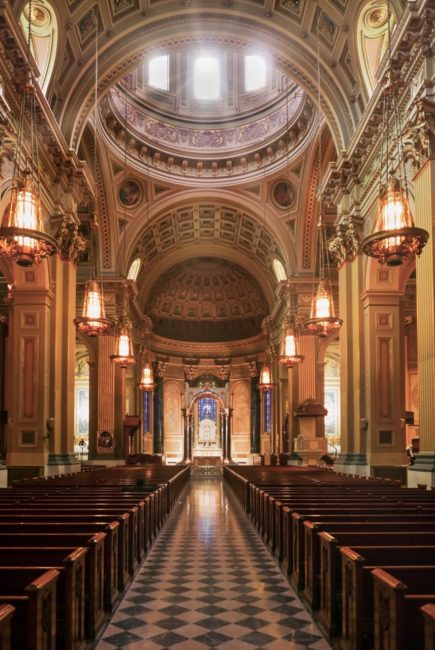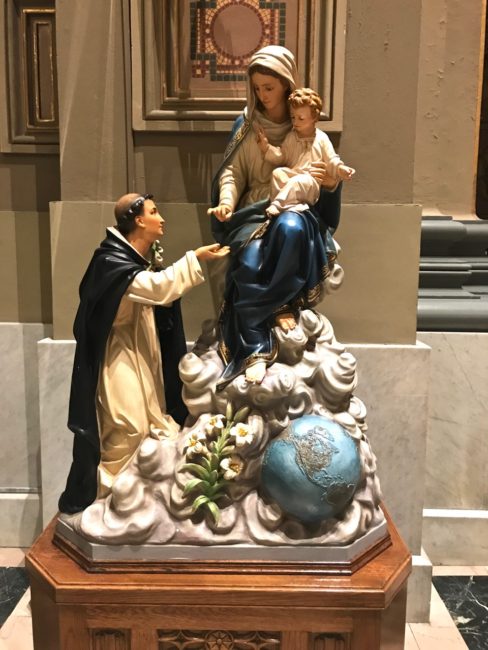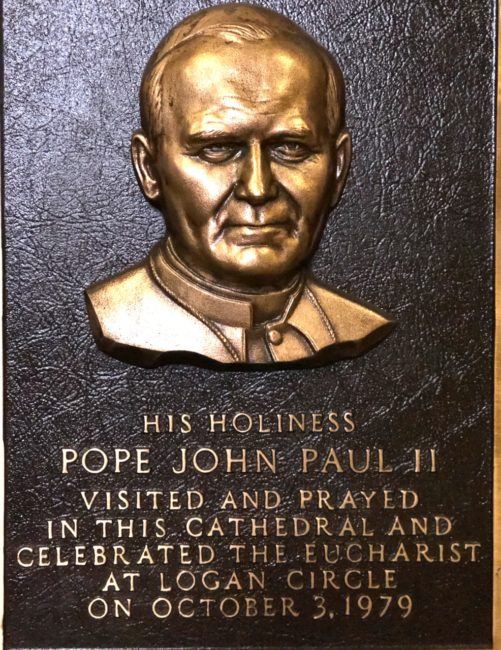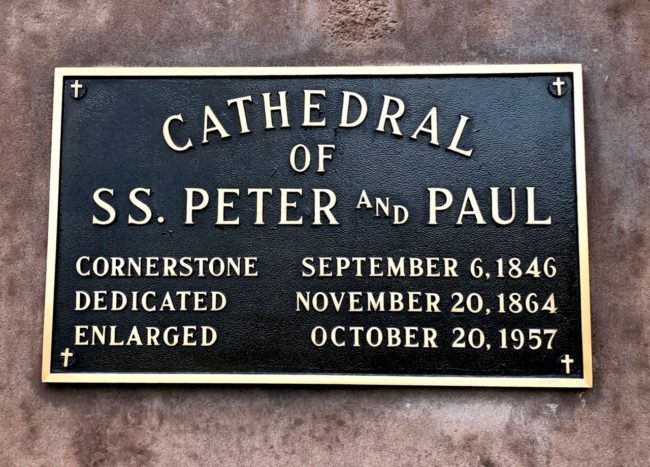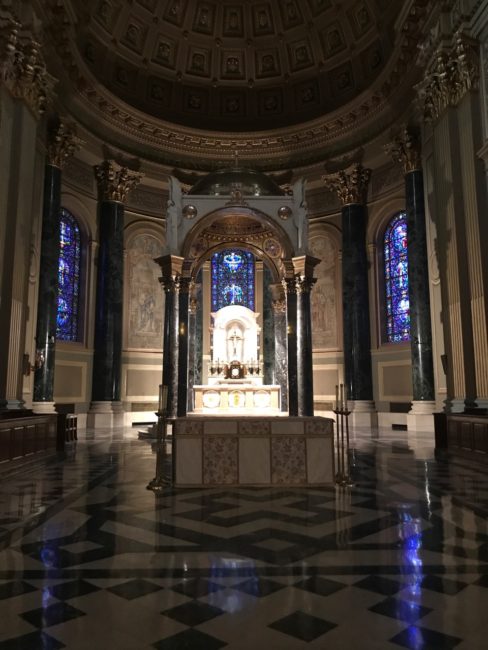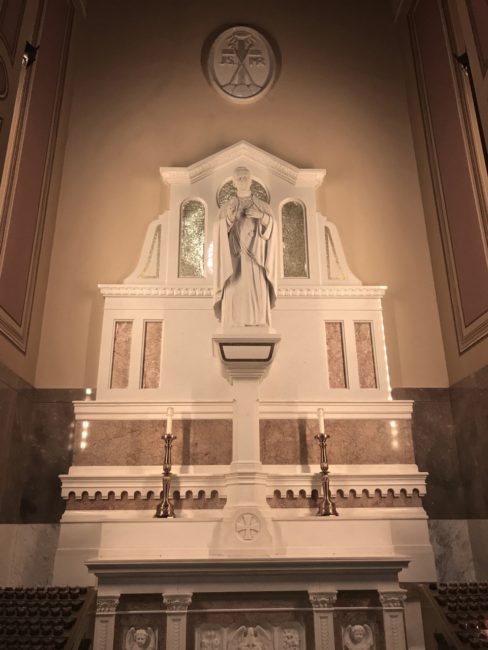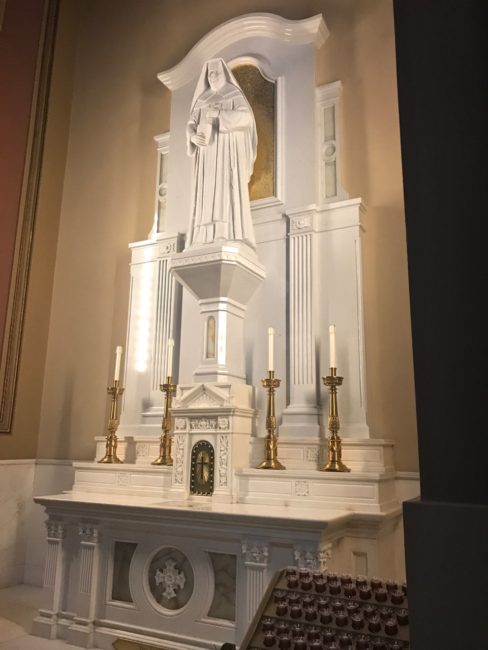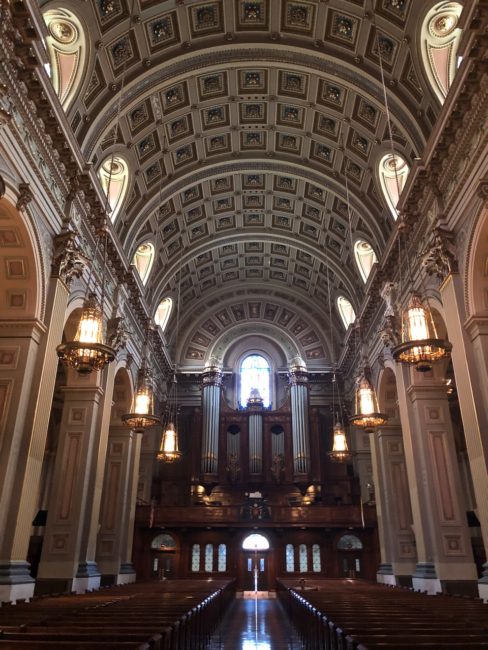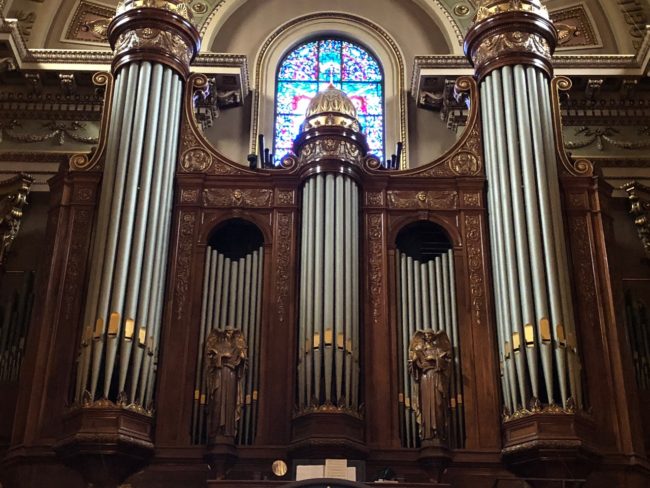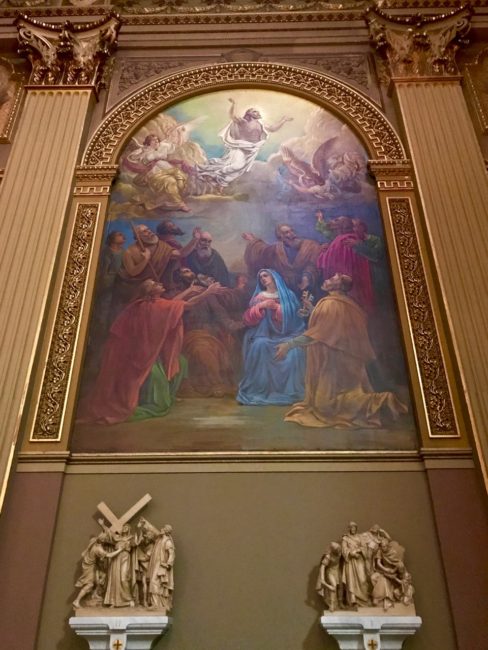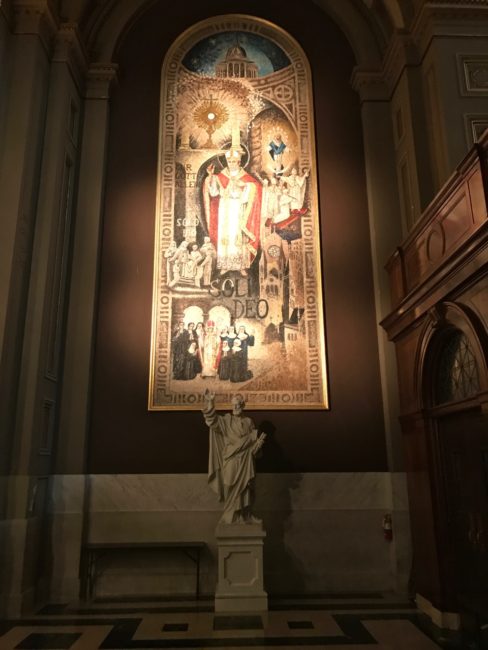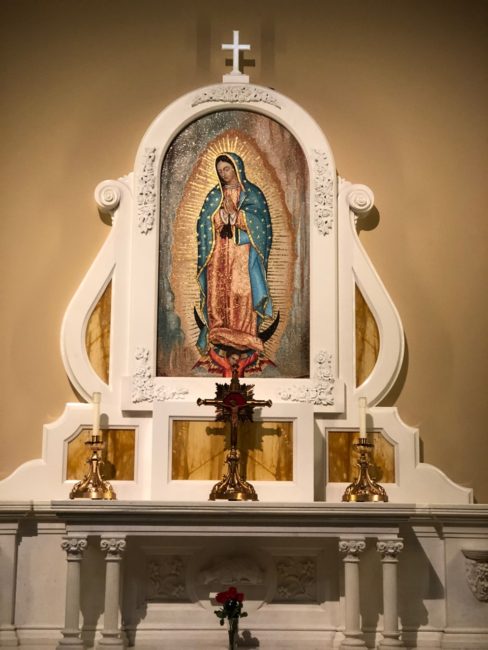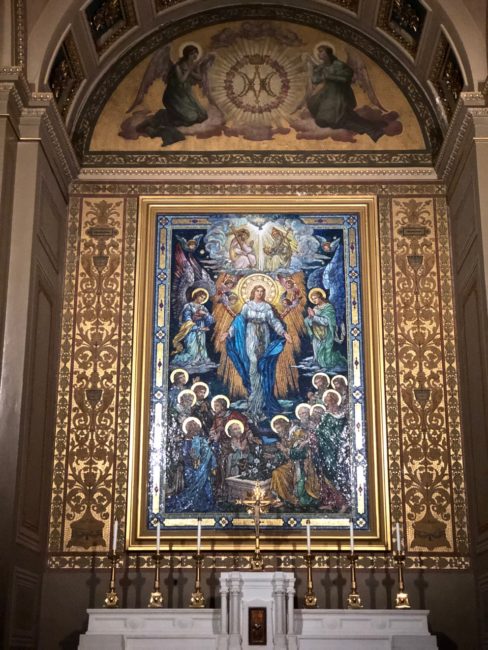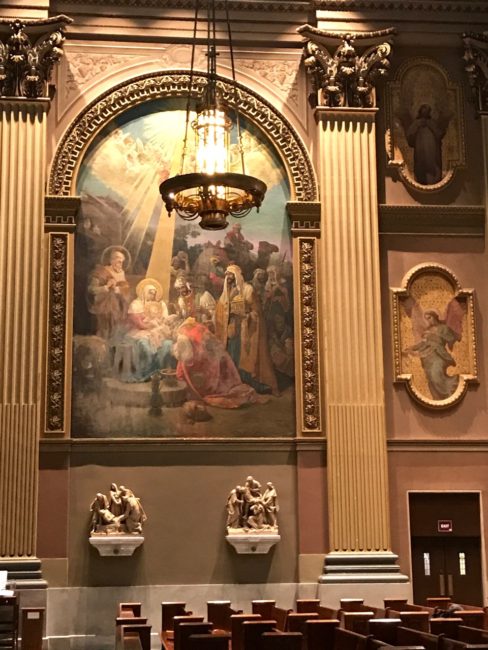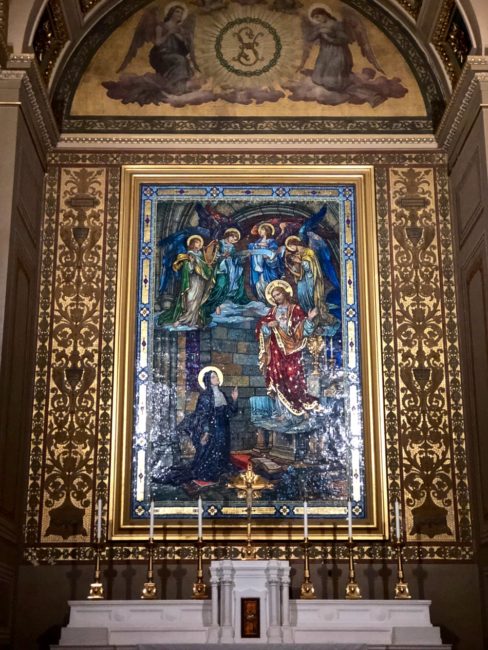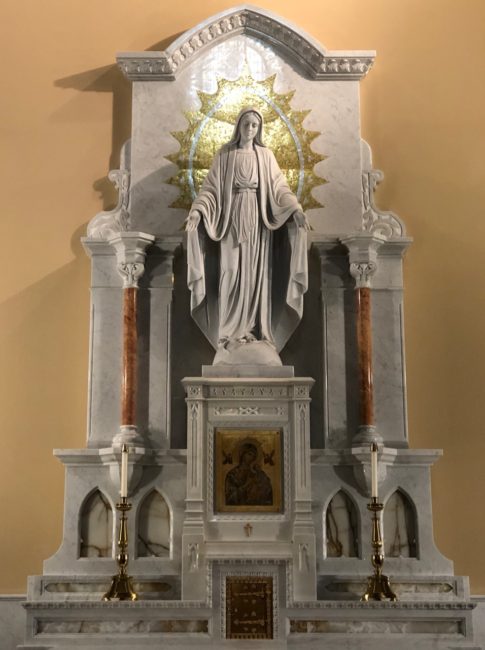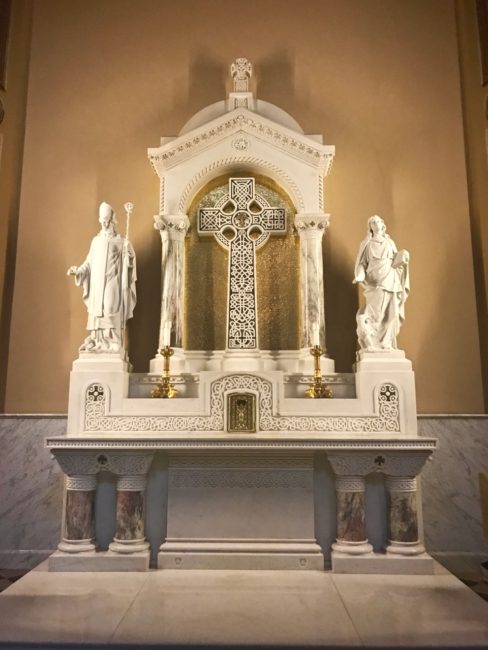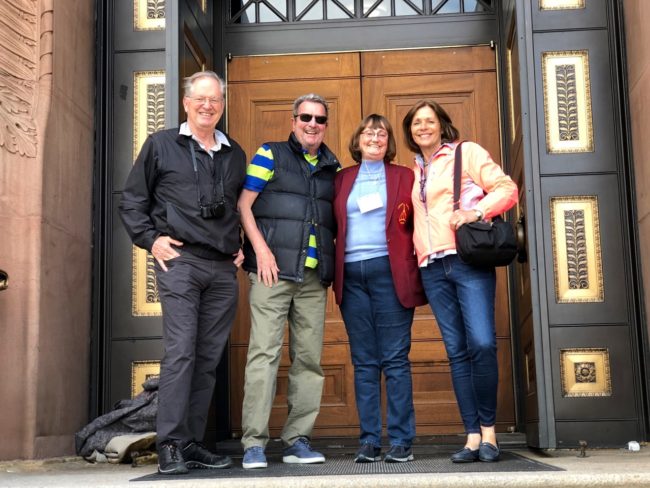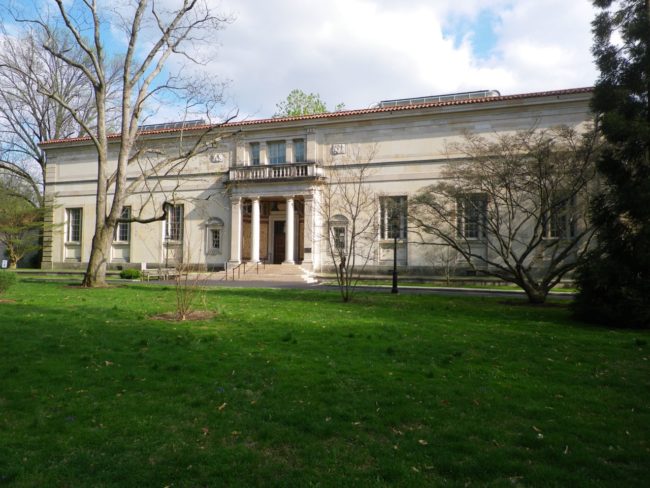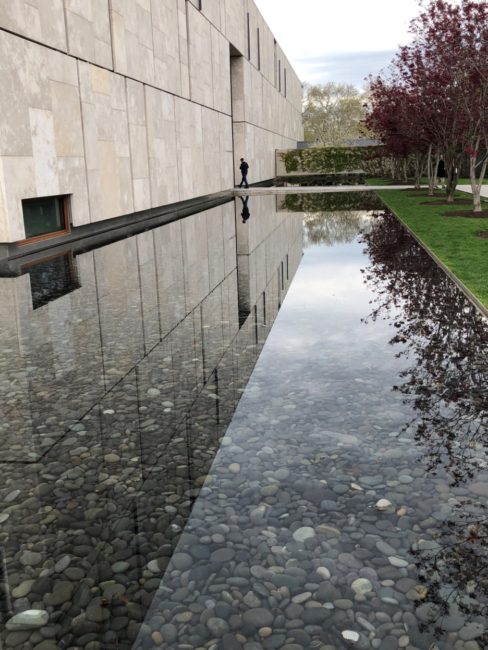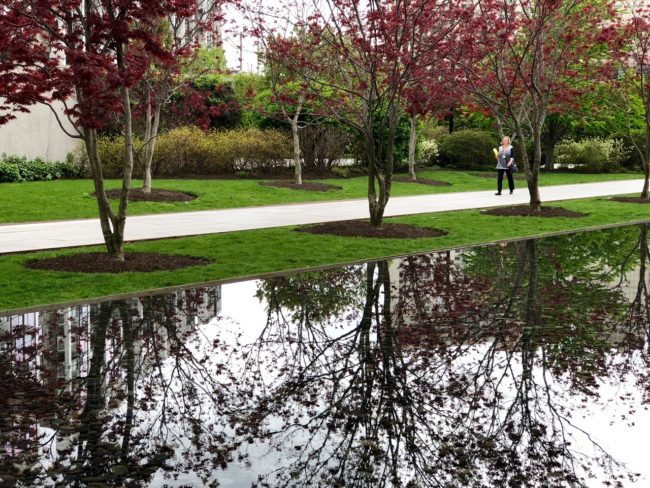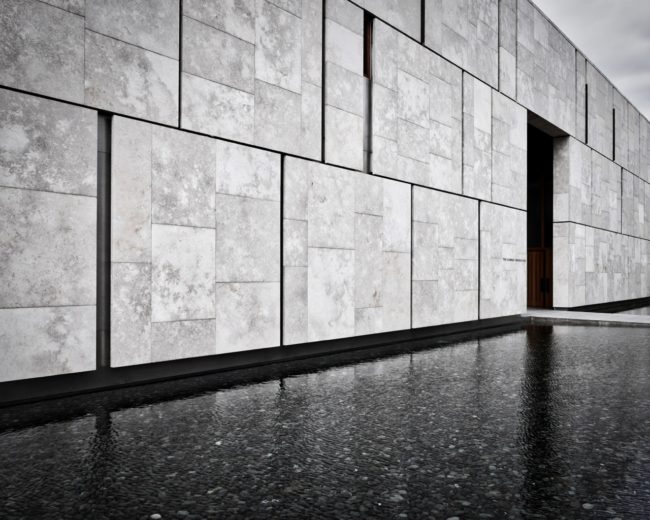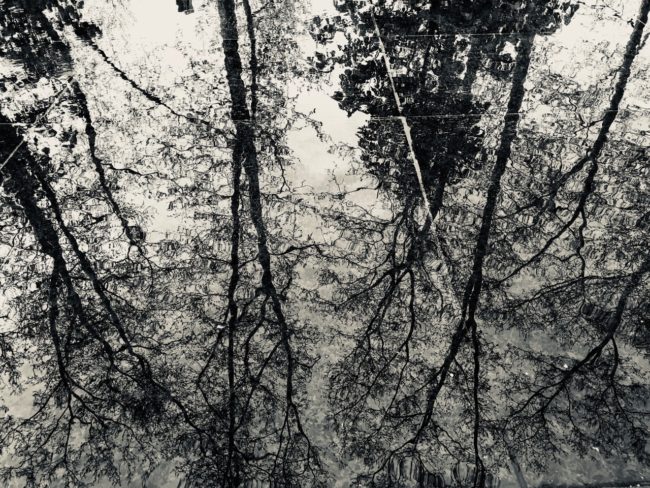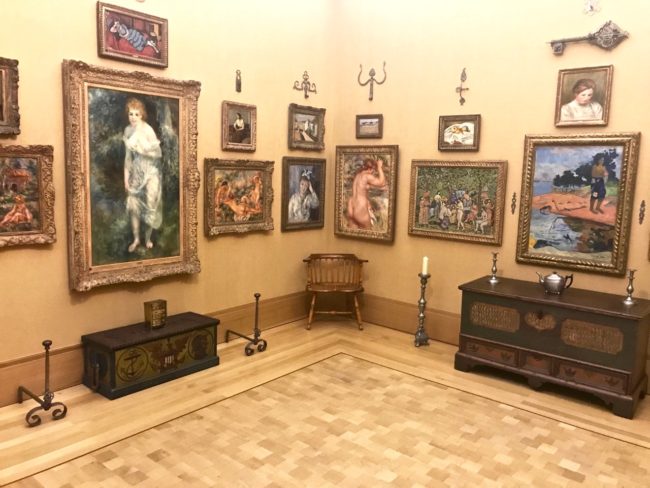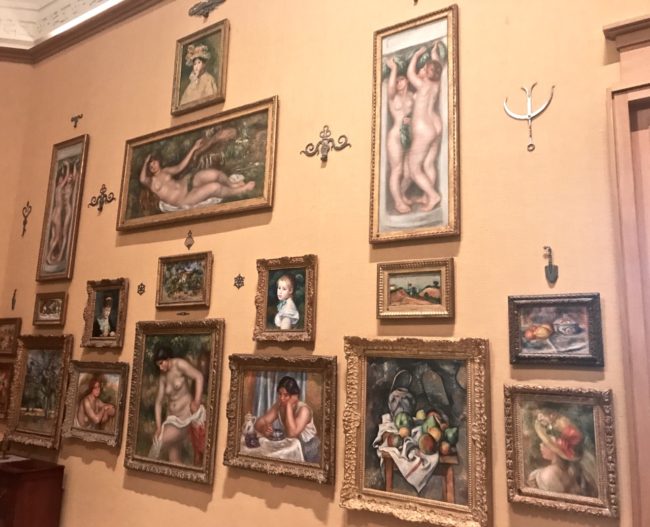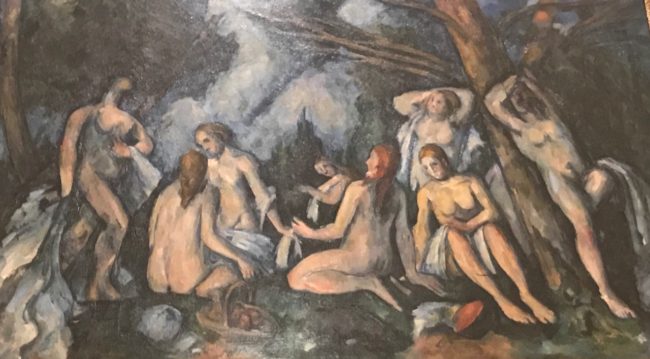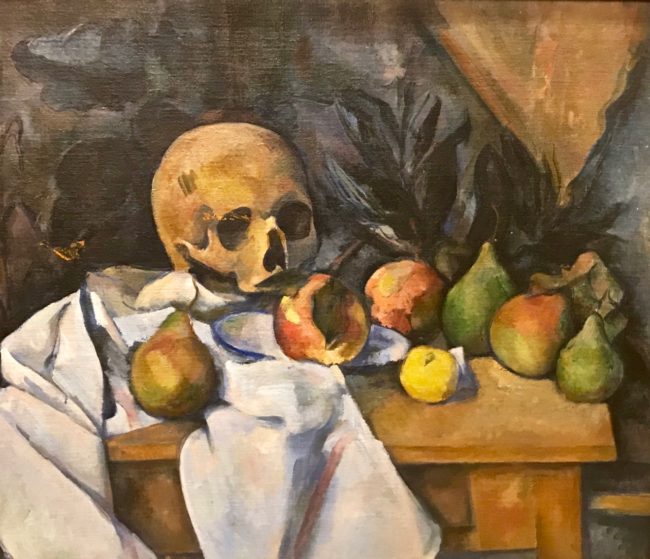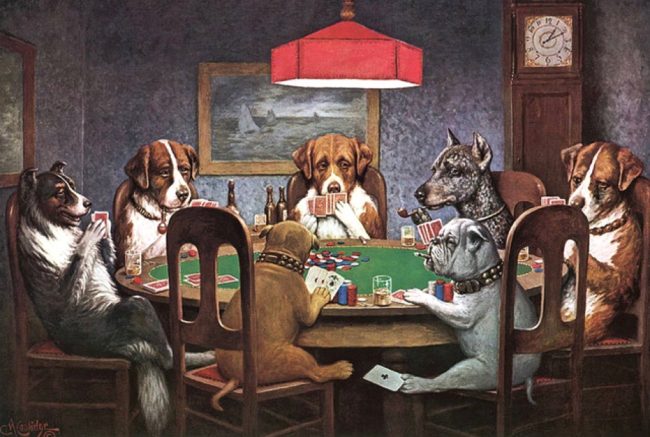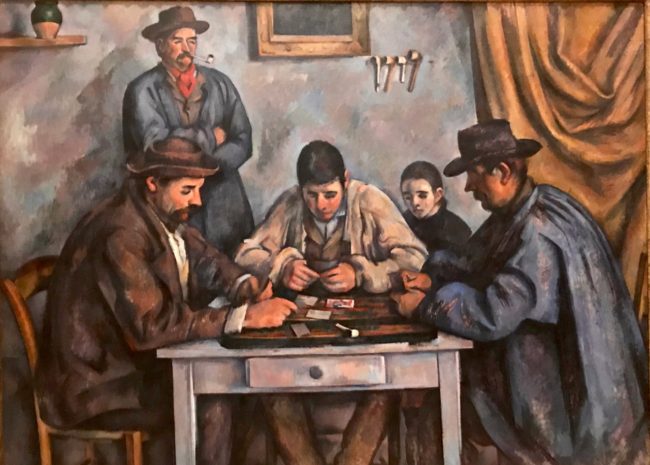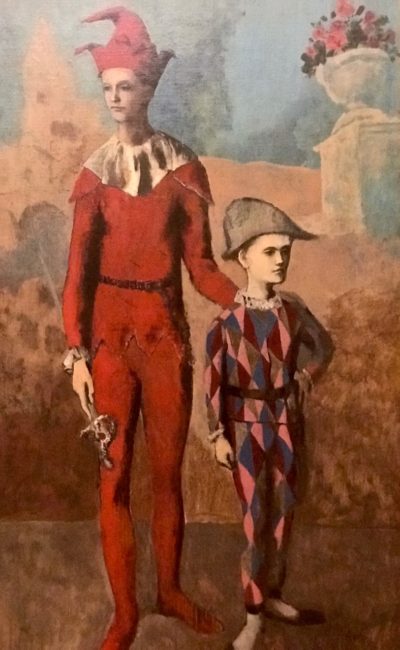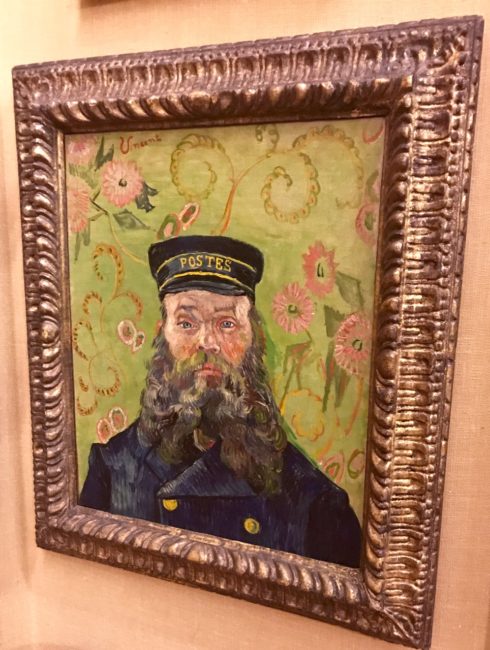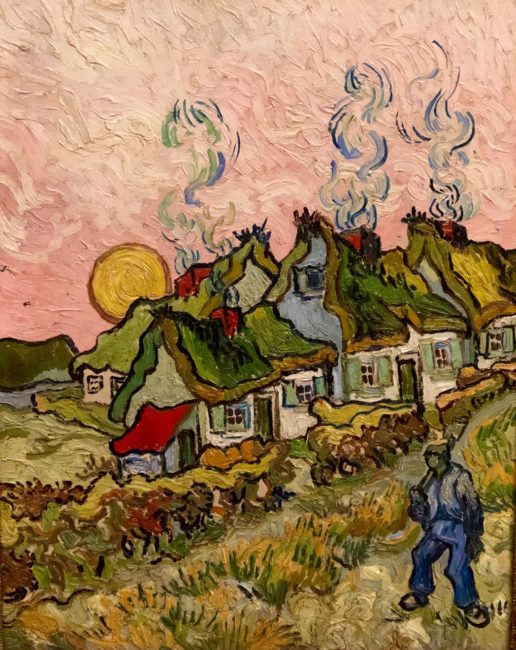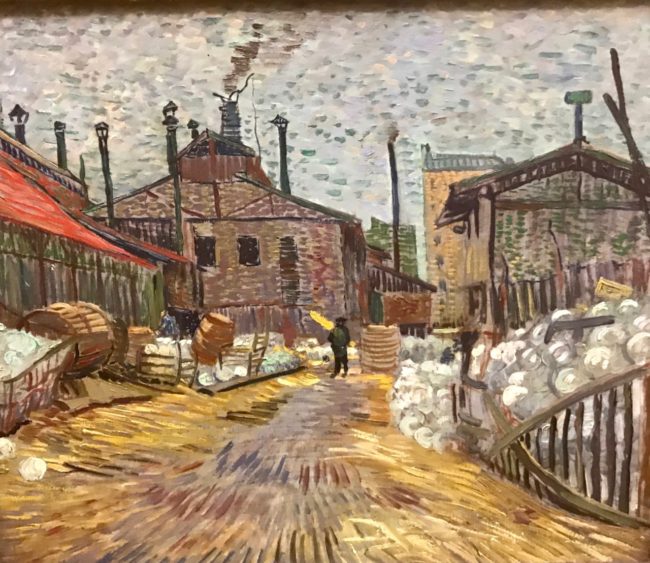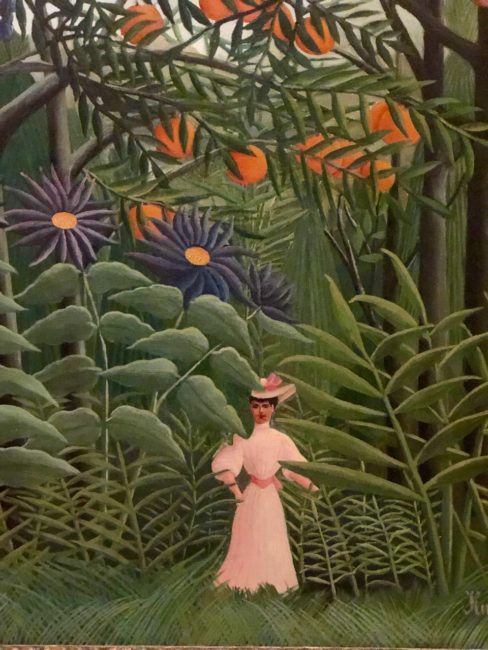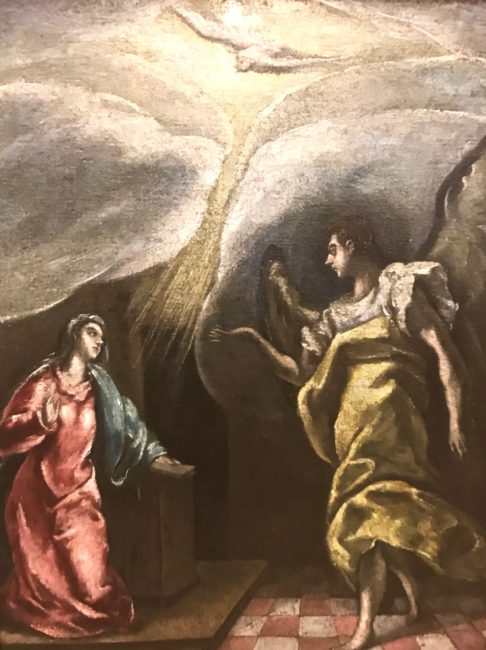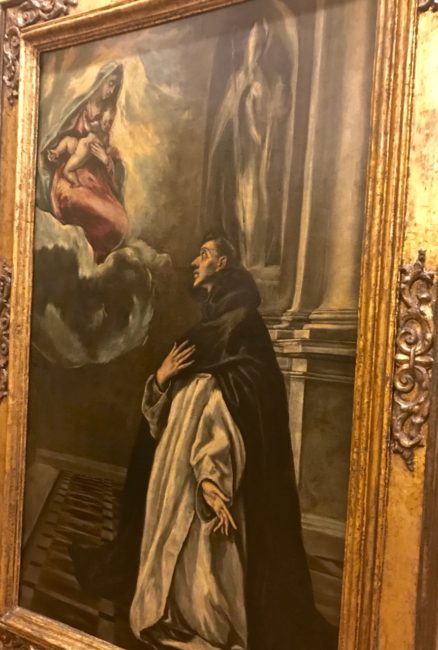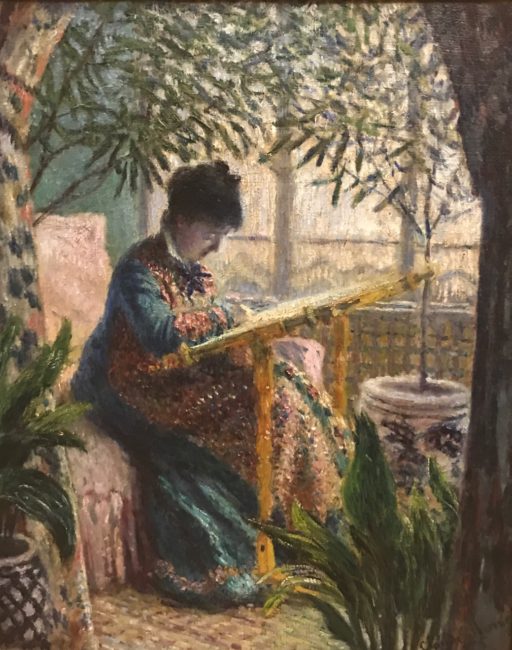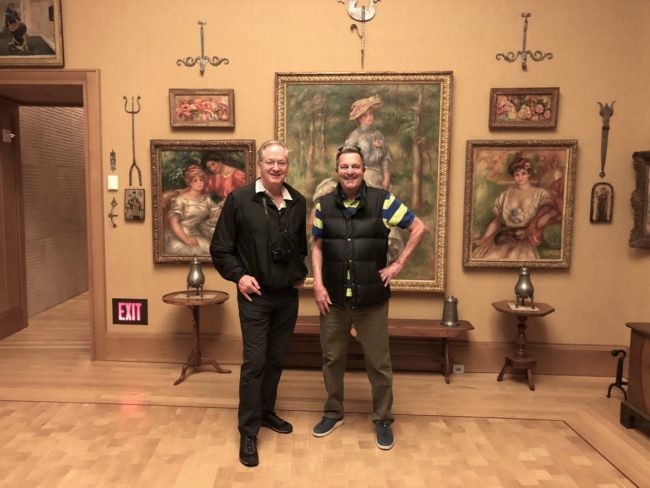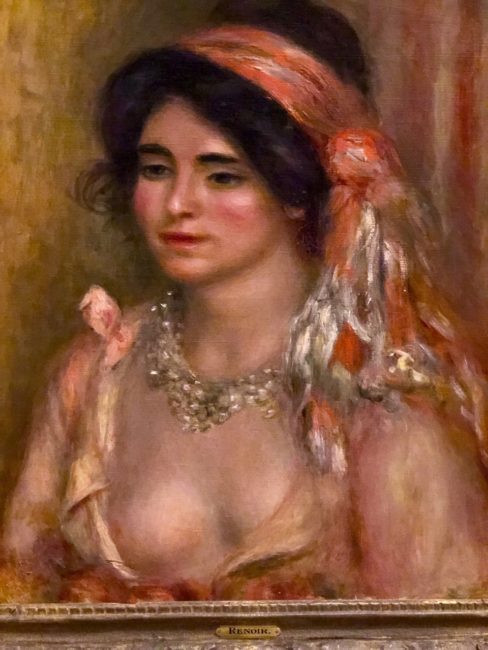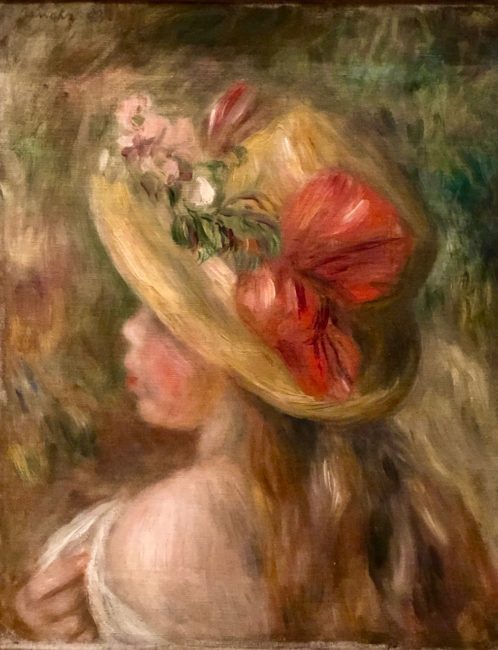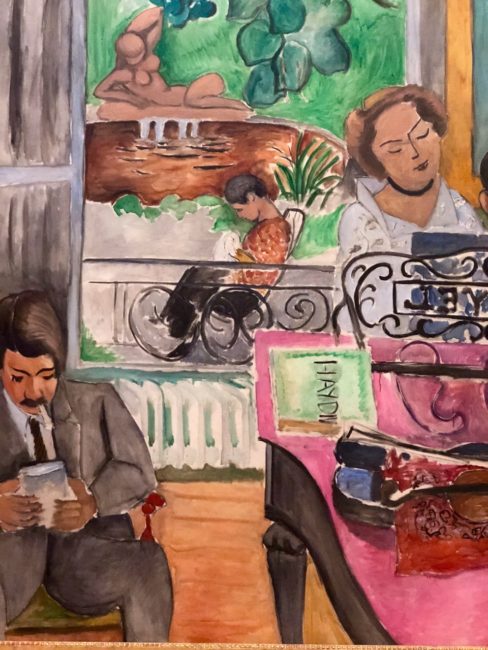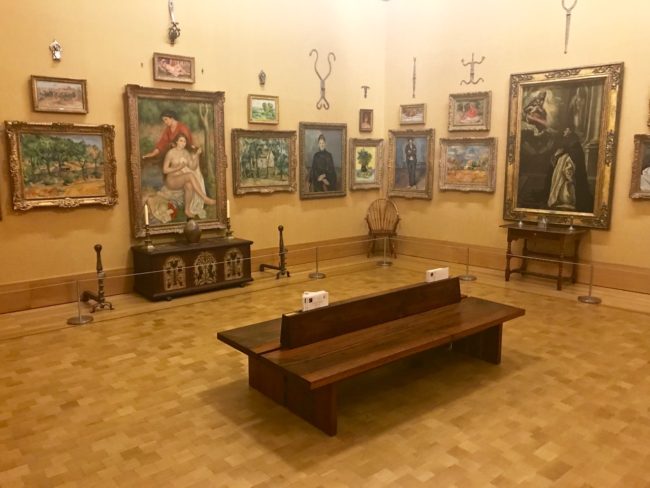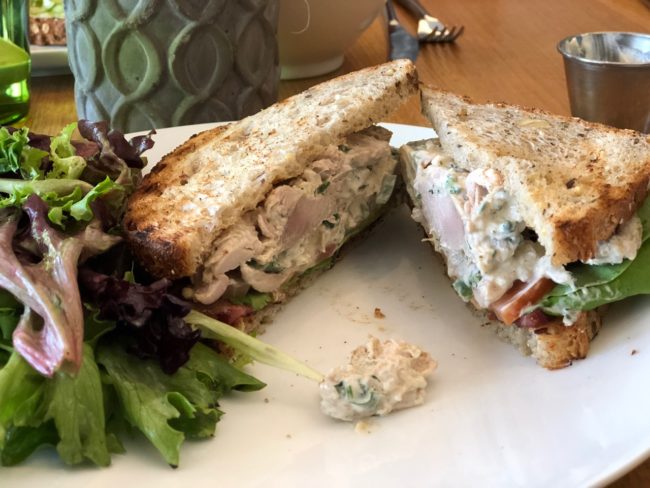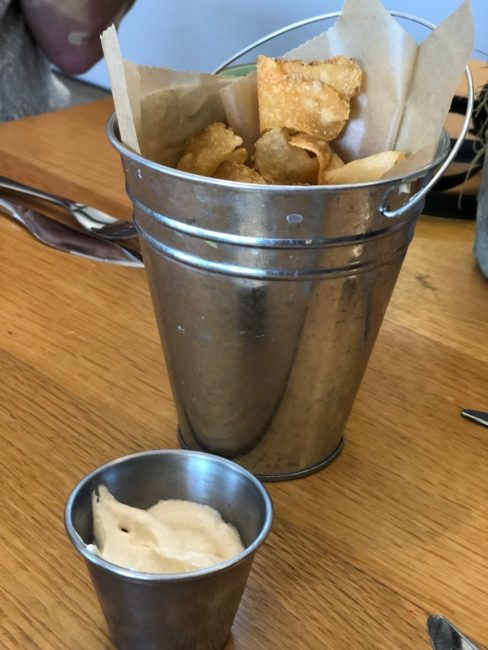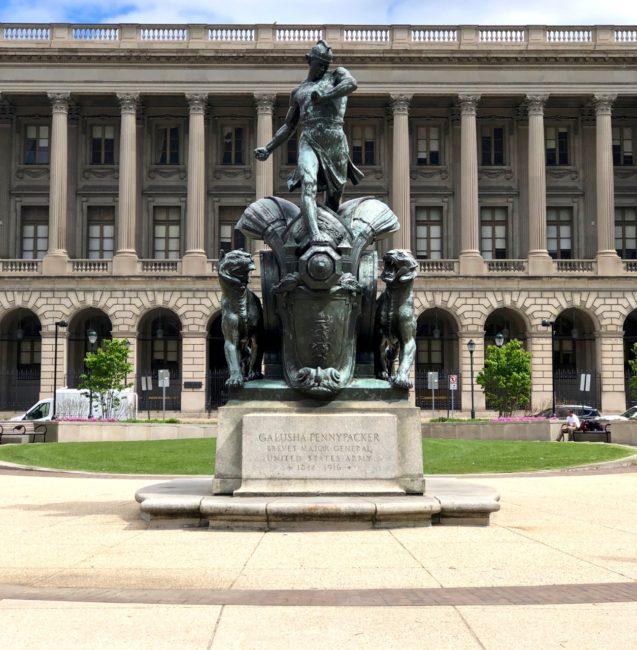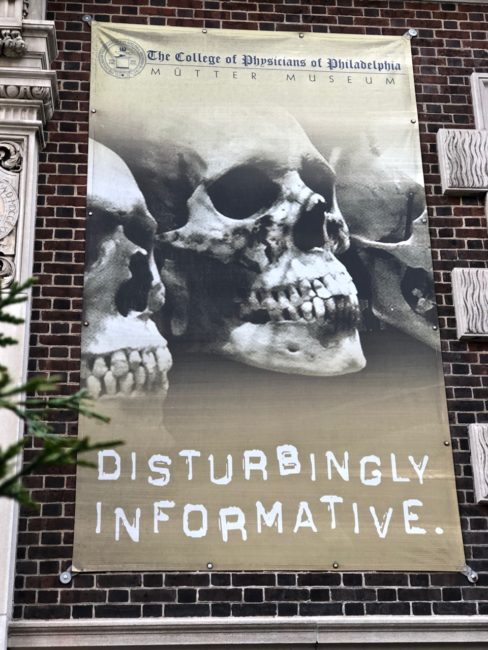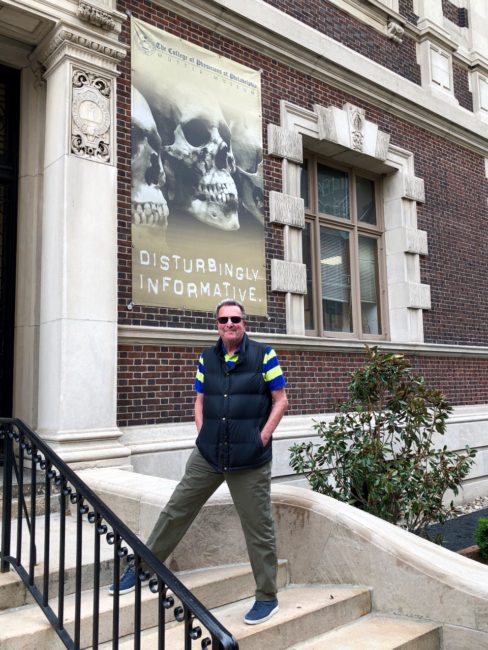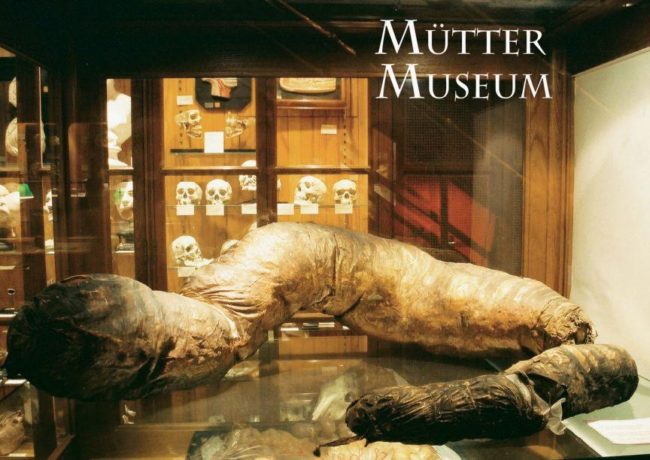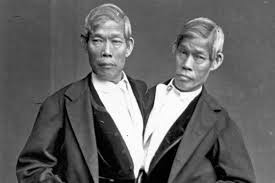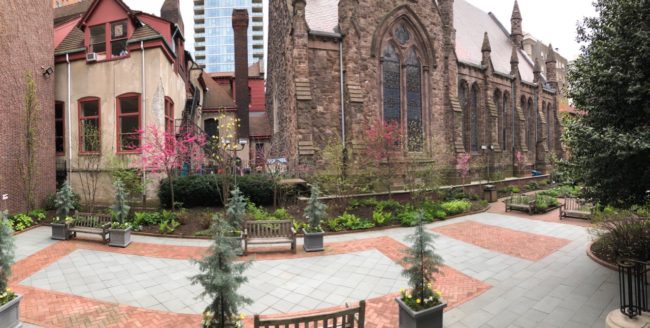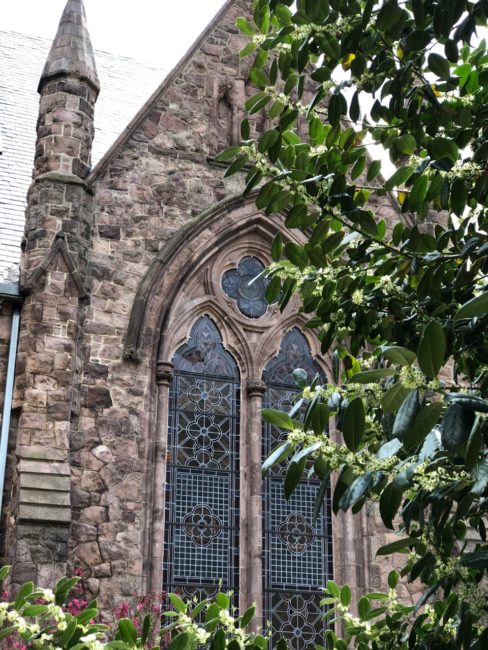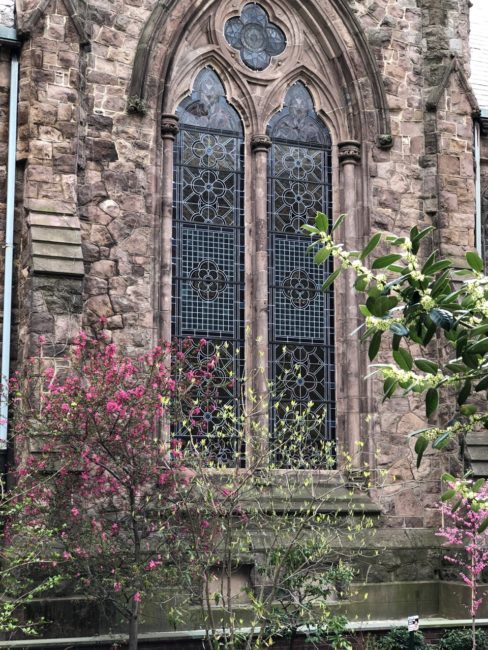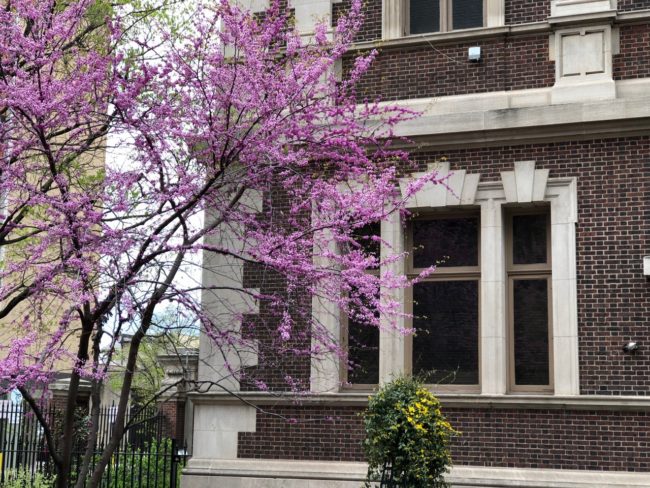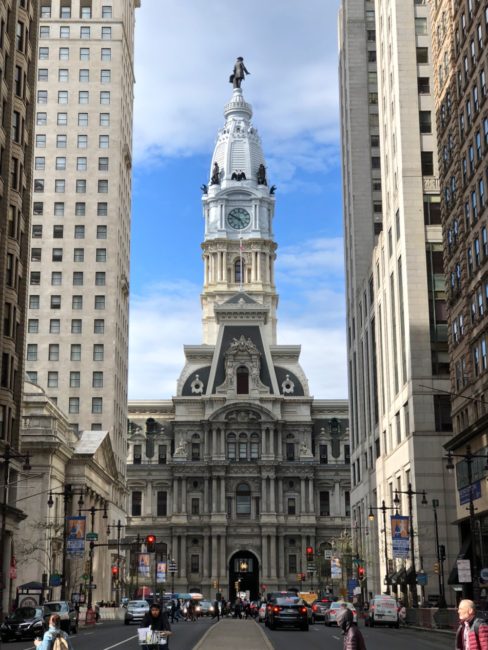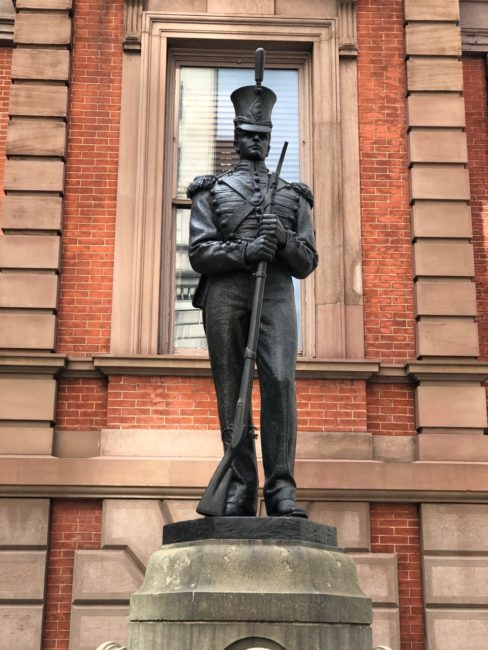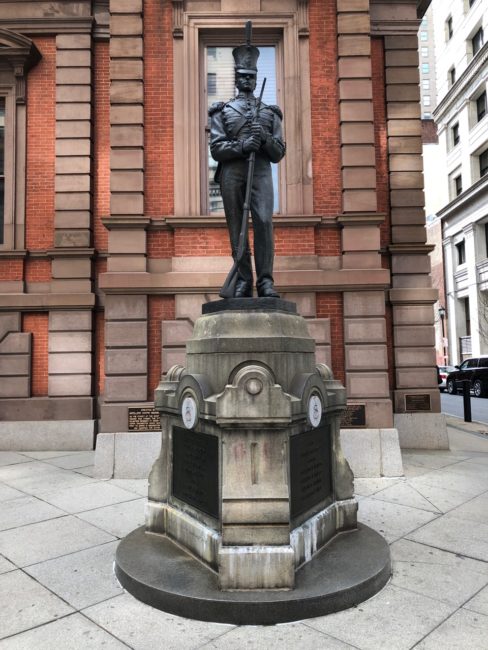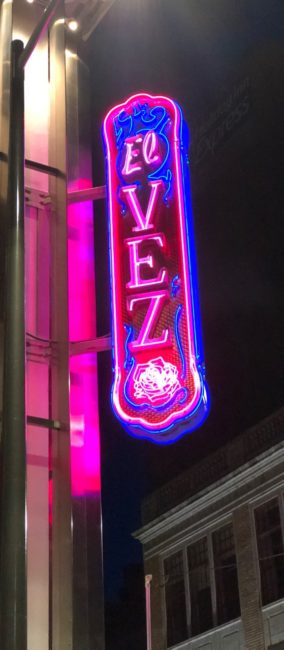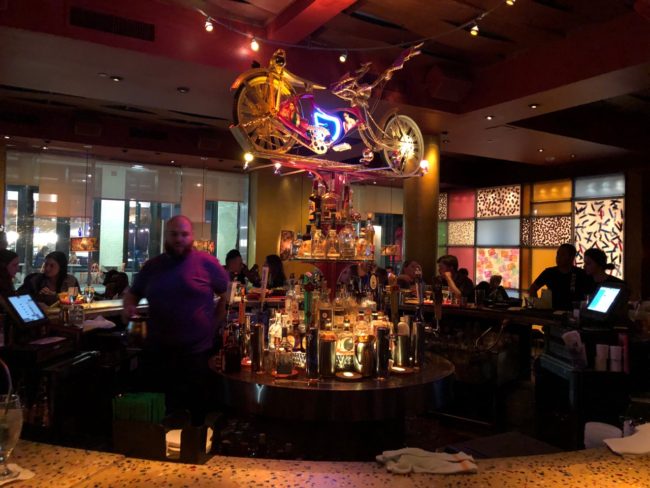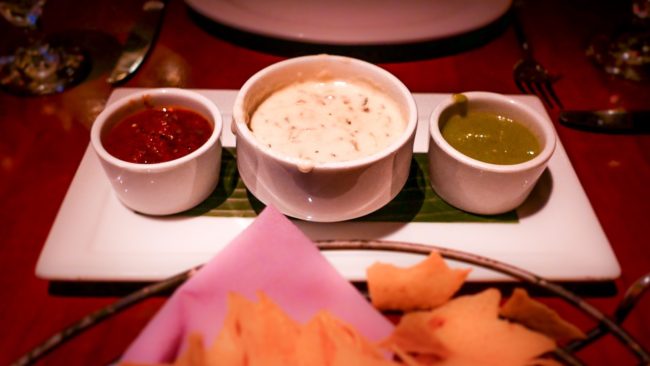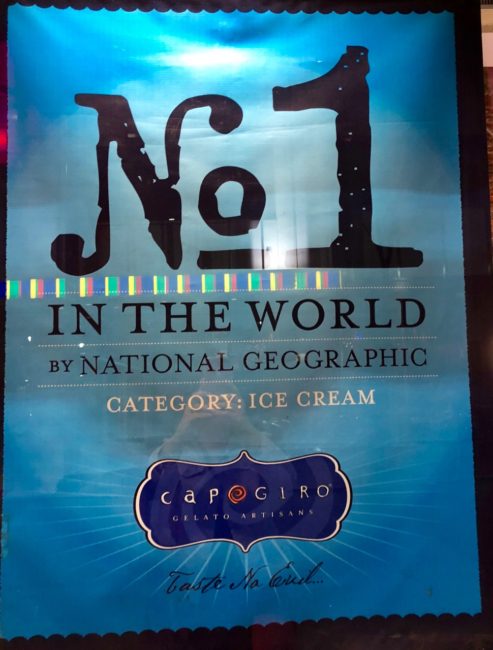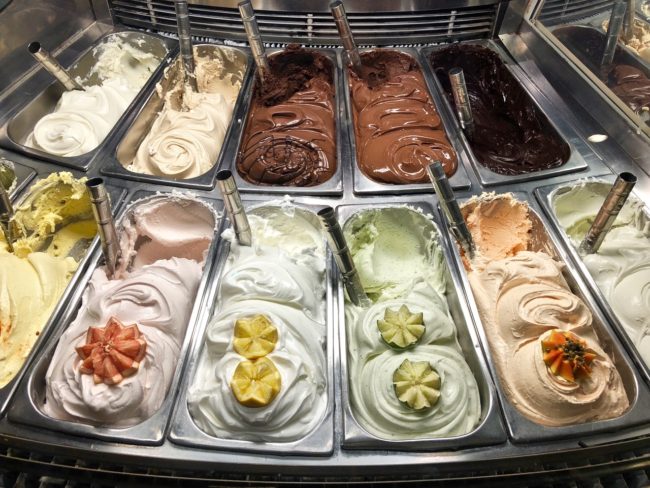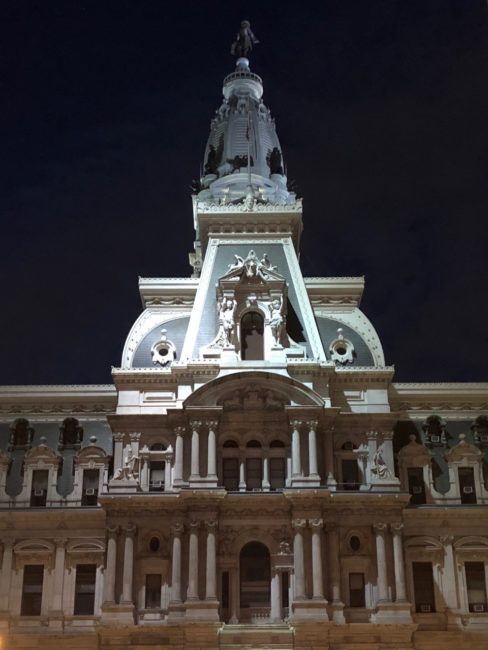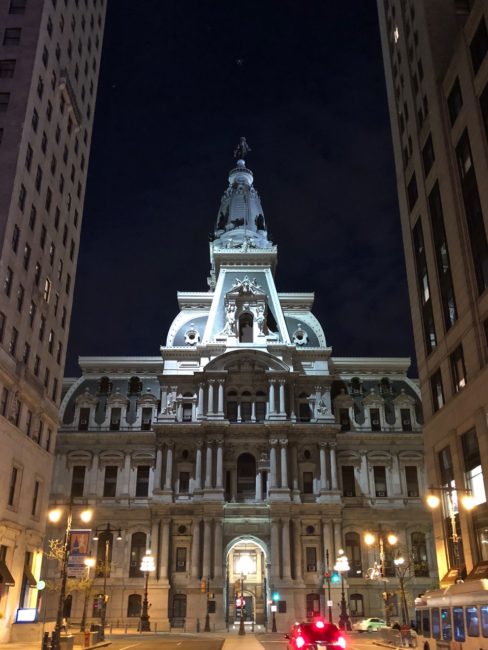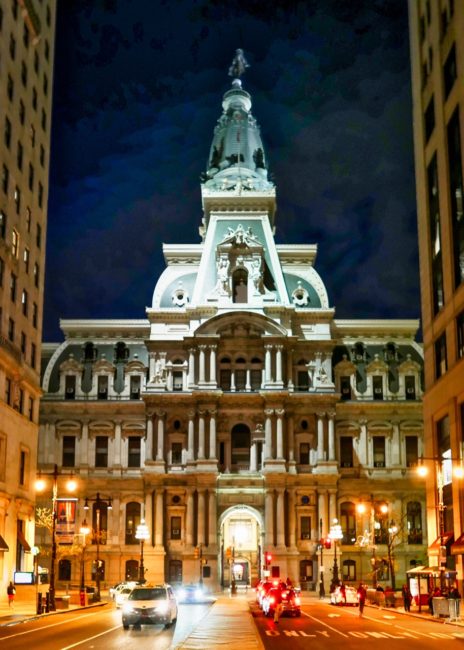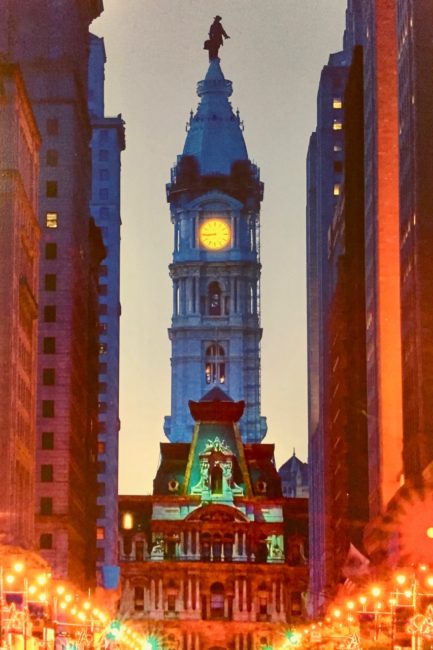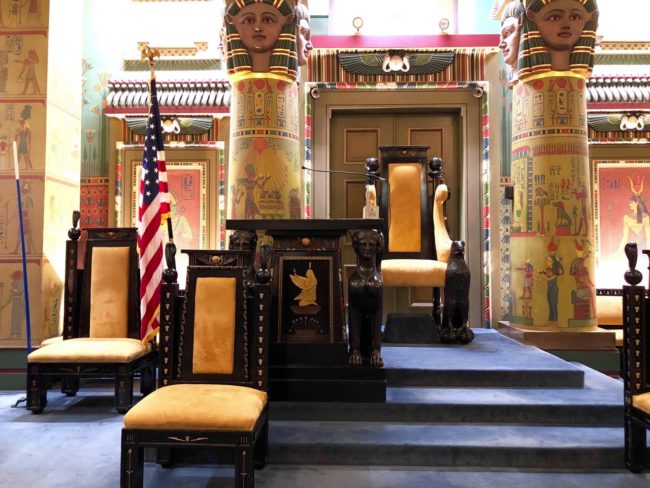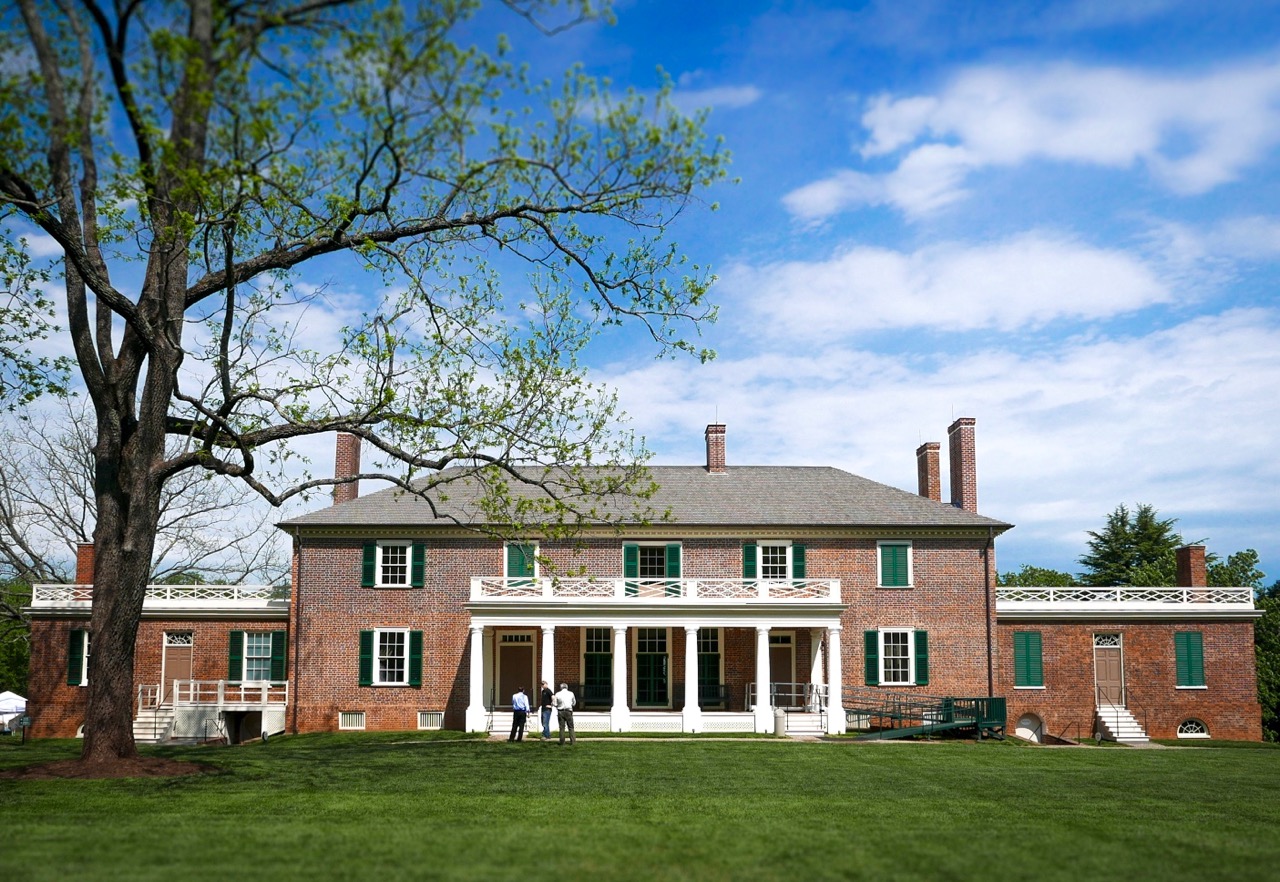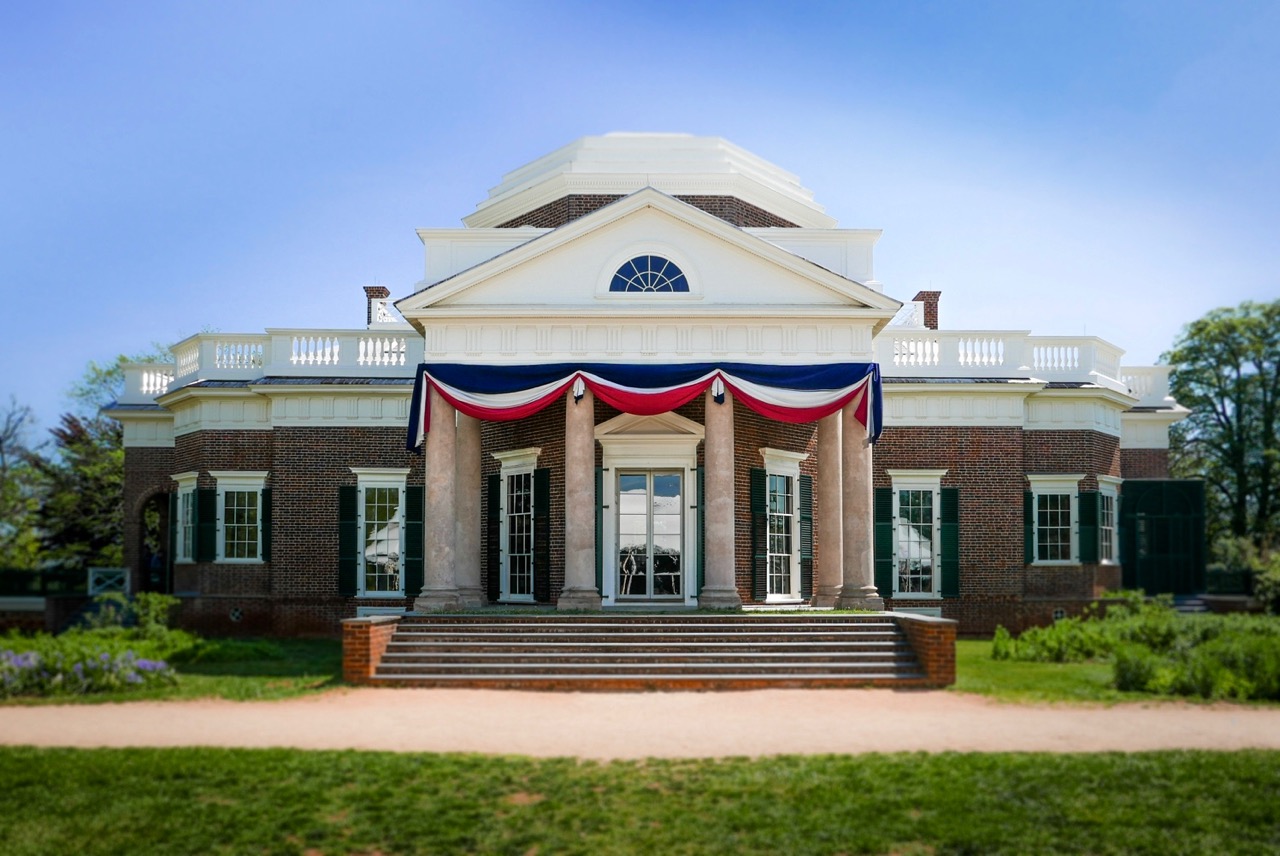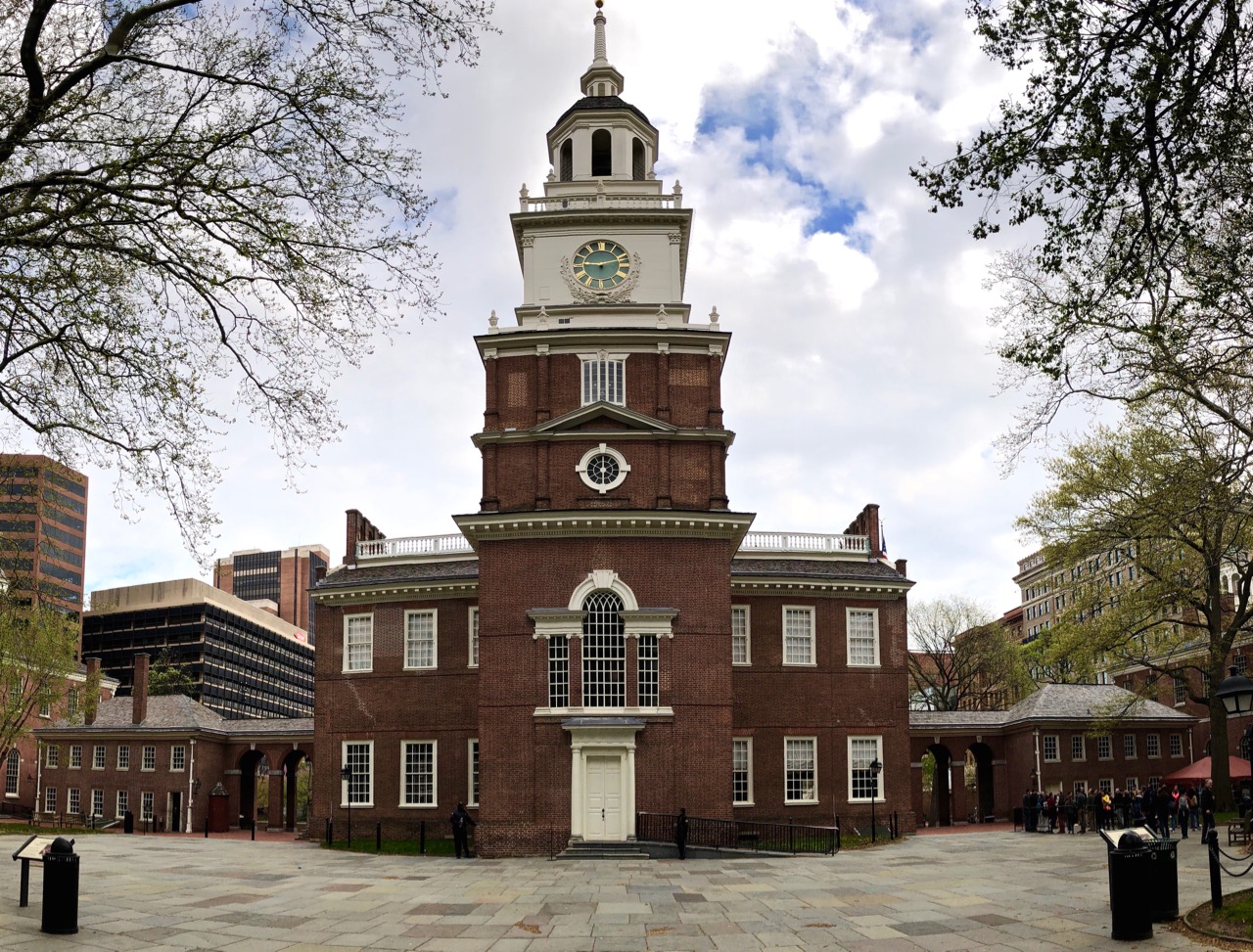
Chapter Three: Philadelphia Freedom
June 12, 2018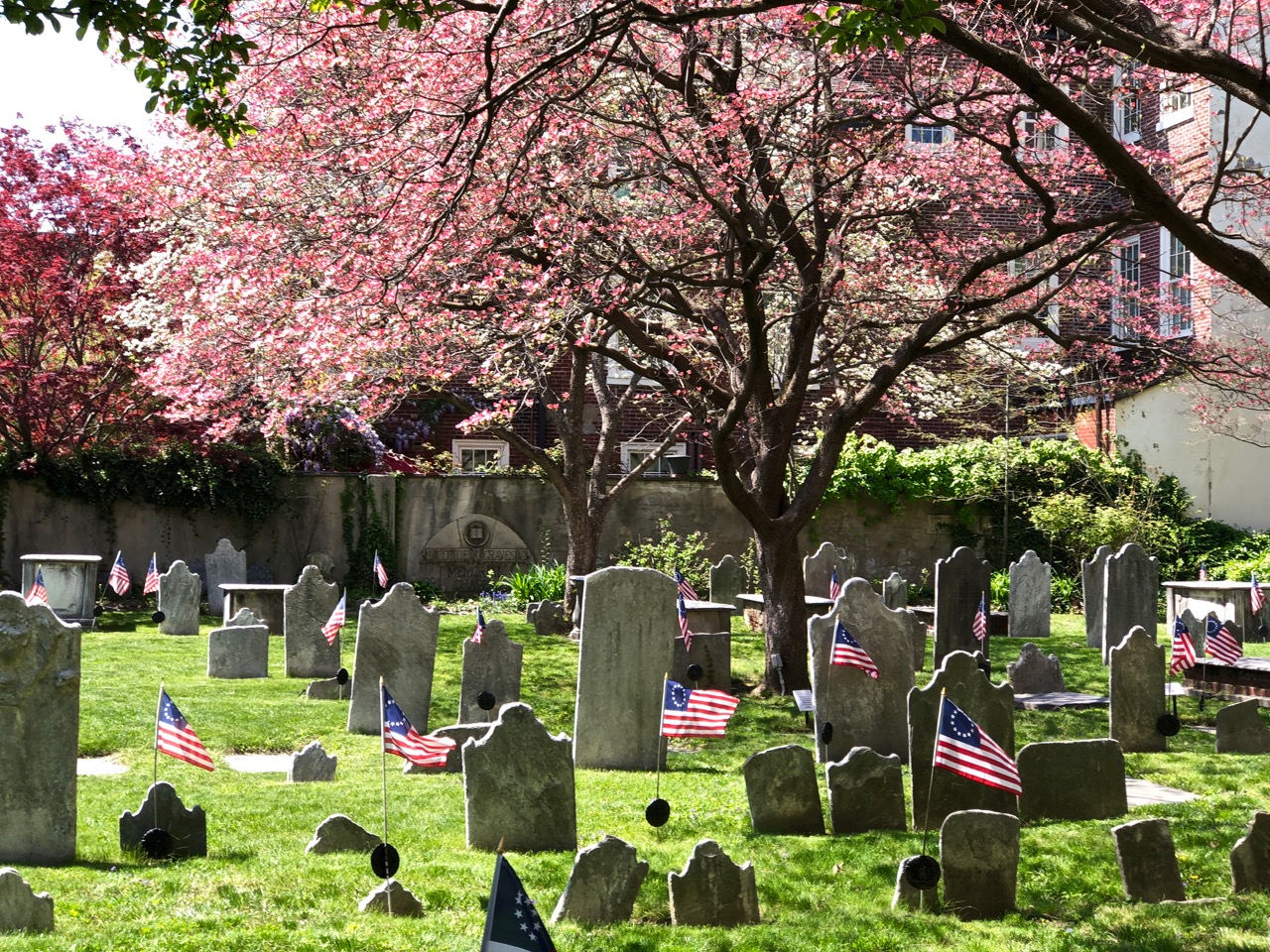
Chapter Five: Philly Finale
June 26, 2018Mai Tai Tom’s Magical History Tour
Chapter Four: Basilica, Barnes & Bones
Day Four: Girder Guys, Peter Paul and Kathy, A Contentious Move, Rampant Renoir, Where Did Van Gogh Toulouse-Lautrec, An Artful Lunch, Disturbingly Informative, Skeletal Remains, I’ll Take Manhattan, The Streets of Philadelphia, Biking Bar, Marvelous Mexican and National Geographic’s “#1 Gelato In The World”
After digging through KarenPhilly’s gift basket (you haven’t lived until you eat potato chips for breakfast), the Philadelphia foursome took off on foot early. We were on the way to a famed art gallery where we had 11 a.m. reservations, but we had two stops to make along the way. Well, actually three.
Potato chips are good, but not very filling so we made a little detour for coffee and pastries at a French bakery, Miel Patisserie. Tres bon!
Reaching John Kennedy Blvd., the largest building in Philadelphia (9th largest in the U.S.) loomed ahead. The 975-foot Comcast Center offers visitors inside its lobby “The Comcast Experience.”
“Hey, who are those guys up on the girders?” Tracy asked. There are 12 life-size figures traversing these girders in what is called “Humanity In Motion.”
I really look up to these people.
There’s also a 12,000 square-foot, high-definition video wall (its resolution is 500 percent greater than that of an HD television) in the Winter Garden that changes every few minutes.
It was pretty cool, but we had a timed schedule to keep on this morning so this humanity got back in motion.
Spotting its copper dome, I knew we had made it to our next stop, the Cathedral Basilica of Saints Peter and Paul, the largest Catholic church in Pennsylvania. I looked at one of my traveling companions and said, “Look, now we have Peter, Paul … and Mary. With this breeze I feel like I’m Blowin’ In The Wind.” The scowl on Mary’s face said, “If I had a Hammer …”
Four massive Corinthian columns highlight the largest Brownstone structure in Philadelphia. I read that the cathedral is the only Roman/Corinthian style cathedral in the United States. We stepped inside the nearly empty beautiful building modeled after the Lombard Church of Saint Charles (San Carlo al Corso) in Rome. The church was put on the U.S. National Register of Historic Places in 1971 and made a minor basilica in 1976 by Pope Paul VI.
Before we took too many steps we met Kathy McHale, who we learned was one of the church’s ambassadors and had never been in the navy. She asked whether we would like to take a tour of the dazzling interior. I knew we had to be at the nearby art museum for our 11 o’clock reservations, so I answered, “Sure, we have 47 minutes” (coincidentally the same amount of time we once spent in Perugia, Italy … story here).
Kathy, a former grade school history teacher, took on my 47-minute challenge with enthusiasm. She told us the church was designed by Philadelphia architect Napoleon LeBrun. It was completed in 1864 during the time of a strong anti-Catholic sentiment in Philadelphia. Kathy added that he (the architect, not Pope Paul) threw sticks and stones at the church so he could place the windows high enough to avoid damage. I assumed that words never hurt him, either. Along with Pope Paul VI, Pope John Paul (without Ringo or George), Pope Francis and Mother Teresa have all visited here.
Beneath the main altar (a replica of a Bernini altar in the Vatican) and baldachin is a crypt where many of Philadelphia’s former cardinals and bishops are buried.
The church contains eight shrines … one honoring Katharine Drexel, a nun and the first woman to be canonized in the United States. The statue on the left is the Saint John Neumann Altar & Shrine. Neumann was the fourth Bishop of Philadelphia, and the first American male to be canonized.
The massive organ has 4,684 pipes, the third largest in Philadelphia. Where’s the biggest organ? Macy’s, of course (true fact). I think you can see it for 40% off on the weekend.
The art inside the church is something to behold.
We wandered as Kathy took us around, and knowing we had that 11 a.m. reservation, she was making it snappy and very interesting.
There are also lovely mosaics, like this one of Our Lady of Guadalupe.
We stopped by the Mural of Blessed Mary’s Assumption, the Mural of the Nativity and the Sacred Heart of Jesus Mural.
The clock was ticking for our art gallery visit … what me, worry? At this point I needed Our Lady of Perpetual Help.
There were lots of sculptures in the side shrines, as well.
Constantino Brumidi painted the ceiling mural in the dome … Assumption of the Blessed Virgin (1868) … and the round portraits are of St. Matthew, St. Mark, St. Luke and St. John. Brumidi is probably best known for his murals in the United States Capitol, and Kim is known for his great ceiling photos …masters both!
Kathy was true to her word and a little before 11 a.m. she had finished her informative tour. (She also had a great sense of humor asking how she was doing on time … always looking at me with a smile … as we walked along). We posed for a photo with Kathy, and it was on (quickly) to our appointment at an extraordinary, controversial and unique museum, the Barnes Foundation, about a ten-minute walk from the church.
Albert Barnes was a pharmaceutical tycoon (who co-developed Argyol, “an antiseptic silver compound that was used to combat gonorrhea and inflammations of the eye, ear, nose, and throat,”) that made him a fortune. He started collecting art in earnest in 1912. He also had the foresight (or luck) to sell the company a few months before the 1929 stock market crash.
Through the years, Barnes collected hundreds of pieces (in 1912, Barnes gave his old high school buddy William Glackens 20 grand and sent him to Paris to buy art.) Glackens returned with 13 paintings, and the Barnes saga began.
By the end, Barnes had accumulated 181 Renoirs, 69 Cézannes, 59 by Matisse, 69 by Picasso and thousands of other (estimated at 8 thousand) paintings, sculptures, pieces of furniture and more. Barnes died in a car crash on July 24, 1951, when he was broadsided by a truck after he (Barnes) ran a stop sign. In 2009, the Barnes Collection of impressionistic and post impressionist art was reportedly worth $25 billion.
The art he had collected had been located in Marion, Pennsylvania, and Barnes had stipulated that the art, which he positioned in an unusual manner in a number of rooms in his home, never be moved. Photo from internet
In 2012, in a contentious decision, the art was moved to a large new building in Philadelphia (for more, see the documentary The Art of the Steal, which is a one-sided documentary partial to Albert Barnes’s position).
In any event, we got to the museum at our allotted 11 a.m. slot. Walking by a reflective pool and some beautifully flowering trees …
… Kim and Tracy got artsy themselves.
We entered, deciding to skip the introductory movie until the end of our visit. There are 23 rooms at the Barnes Foundation, each one mimicking as closely as possible the alignment of art as it was positioned at its previous site. One thing you’ll notice is that in each room, along with the pieces of art, there are numerous hinges also displayed (perhaps Barnes feared of becoming unhinged) in the rooms.
As I always try to do, we took the first time slot of the day, meaning we could meander through all the rooms before the maddening crowds appeared (and they did, although there are only so many entries per time slots). There didn’t seem to be much rhyme nor reason to the layout of the paintings, but obviously it made sense to Barnes.
He would “revise the assemble” when he would make acquisitions, as he did not want it to be an museum. Barnes was more into the educational experience. The museum is careful to say that “the installation on view in the Collection Gallery reflects the ensembles as they were at the time of Barnes’s death in 1951.”
It has only been in recent months that photography was allowed inside the Barnes.
Among all this, there are a number of notable paintings here, including Cézanne’s Large Bathers, which he painted before a Weight Watchers session. It seems Cézanne had a fascination with bathers, and he painted bathers throughout his lifetime.
I could imagine a head of lettuce painted alongside some fruit, but Cézanne decided that just a head (a skull, to be exact) would suffice in his Nature morte au crane.
Although I am partial to Dogs Playing Poker (not at the Barnes), Cézanne’s The Card Players was pleasing to the eye.
There was a Picasso masterpiece (left), Acrobat and Young Harlequin, which marked the beginning of his Rose Period and his fascination with street performers, along with Van Gogh’s Portrait of Joseph Roulin (who happened to be Vincent’s postman). Both stood out.
I also enjoyed Van Gogh’s Houses and Figures, along with his Factories in Asnieres.
Tracy liked Henri Rousseau’s Woman Walking in an Exotic Forest (Femme se promenant dans une forêt exotique).
I felt like I was back in Spain (without the GinTonics) when I ran into a couple of paintings by my friend El Greco.
Camille au métier by Claude Monet shows Madame Monet embroidering.
In many of the rooms it’s easy to be overwhelmed by Renoir. Kim and I survived.
Tracy was fond of a couple of Renoir paintings, the Portrait of Mademoiselle Marie Murer and Young Girl With A Hat.
We spent about 1 1/2 hours touring the Barnes Foundation. Afterward, we watched a short movie about Barnes himself. Does the Barnes have the best art collection in the world? No. Is it worth the time to visit? Absolutely! It’s kind of a mishmash of art pieces and paintings, but I found plenty of paintings in each room that could draw me in. Fascinating visit!
Nearing 1 p.m., we were famished. Tracy’s former boss had recommended dining at the restaurant (The Garden Restaurant) located in the Barnes, and he picked a winner. I’ve found that oftentimes you can get some good meals at museums, notably the Jacquemart-André in Paris and the Native American Museum in Washington DC. The food here was delicious from the hamburger to carrot soup to avocado toast to the chicken sandwich with tarragon. The bucket of homemade chips and onion dip was an added plus. If I’d had any more of those they would have had to call me Mr. Chips.
Outside, it was rather blustery, but we had to walk off that delicious lunch. The Philadelphia Museum Mile is a beautiful area, which includes (among others) the Philadelphia Museum of Art (we’ll go there tomorrow), the Rodin Museum and some intriguing public art like the General Galusha Pennypacker Memorial. At only 20 years-old, Pennypacker (from Chester County, PA) was the youngest general to serve in the Civil War, where he was severely wounded and later awarded the Medal of Honor. The statue in his honor was dedicated in 1934, 18 years after his death.
Digression: Speaking of walking, I love walking in cities on the East Coast. No dilly-dallying. Keep moving or get run over (by cars or other pedestrians). Out west, people saunter across the street so slowly that I’m sure many drivers waiting to make that right hand turn would like to run them over.
Moving on, in a little less than a mile we were at a place where a sign read, “Disturbingly Informative” (much like Travels With Mai Tai Tom).
We were standing outside the College of Physicians of Philadelphia (aka the Mütter Museum). According to literature I had read before I left, “The museum has hundreds of anatomical and pathological specimens, medical instruments, and organs removed from patients, including a piece of John Wilkes Booth’s neck tissue. The collection contains 139 skulls.” The cost to enter is $18, and $15 for those of us closer to being displayed here.
One sign had me muttering … “no photography,” however after touring around it, I can see why this might be a place off limits to cameras. (photos are courtesy of the Mütter Museum).
While inside you can see the largest human skeleton on display in North America, more than 2,000 items humans have swallowed (and had removed), along with the world’s largest colon (a semi-colon would have sufficed).
It actually was quite an informative museum, and even the most squeamish shouldn’t be steered away. You can see everything from The Soap Woman, the thorax of John Wiles Booth and a number of skull collections (maybe this where Cézanne got his idea for that painting).
Don’t miss the death cast of Chang and Eng (photo courtesy PhillyVoice), conjoined twins who lived in Thailand and toured the U.S. in the 1800s. The conjoined liver is actually that of the twins.
After about an hour, it was time to walk back to the hotel …
… all the while enjoying …
… some of Philadelphia’s architecture and public gardens.
Walking near our trinity, we were beckoned into a nearby Irish pub whose name escapes me. It felt good to sit for a few minutes. The drink didn’t hurt either.
We took a detour and walked by Philadelphia’s City Hall (gorgeous) to check out a restaurant I had read about.
We looked at the menu and interior of the El Vez Mexican restaurant and thought that it would be a good place to dine. We also spied a place our friends told us about at dinner the night before where we could grab some dessert later.
We passed by the Union League of Philadelphia, which the plaque stated was “founded in 1862 as a patriotic society supporting President Lincoln’s efforts to preserve the Union.”
Back at the trinity, we actually had time for a nap (I must have done something wrong in my planning … I never include sleep). Back on our feet and rested, it was time to head down to El Vez, which would be our third Stephen Starr restaurant in four nights (no, we didn’t plan it that way).
Walking into El Vez, the first thing you spot is a colorful low-rider, rotating bike smack in the middle of the bar. This is not your father’s Mexican restaurant. As their website proclaims, “As bright and boisterous as a joy ride in a Tijuana taxi, El Vez exudes fun at every conceivable turn.”
Everywhere from the hip booths to the astonishingly colorful walls is eye-popping. The food was good, too. Kim’s and my short rib enchiladas with chocolate mole, sesame onion and crema were killers.
For a “Wow” experience we all inhaled the Melted Manchego with chips. The dip contained Manchego, cilantro, tomatillos, sweet onions and lime. Truly spectacular!
Dinner was so good, we thought about passing on dessert across the street. Who am I kidding? We walked inside Capogiro Gelato, named the #1 Gelato In The World by National Geographic. Here the colors were defined by creamy gelato.
Delicious salted caramel, amaretto, banana/amaretto and pistachio/vanilla all entered our collective stomachs …
… and before you could say Pepto-Bismol we were on way home, shooting a few last photos of City Hall, which shone on a now fairly warm night.
Kim went all in on his post production photos of the iconic building.
Tomorrow would be our last day in Philly, and we would make the most of it.
We’d check out a “secret organization” where many presidents became members, pose with a fictional fighter, see some beautiful works of art, down that first Philly Cheese Steak, walk down to see Philadelphia’s finest violinists and comedians, check out a couple of cemeteries, magnificent mosaic in an office building, and get a great view of Philadelphia.
Next: Chapter Five – Philly Finale
Day Five: I’ve Got To Be Free, Rooms of Beauty, Walk Like An Egyptian, How About That Secret Handshake, A Rocky Time To The Top, Tracy Falls In Love with Two Sargents, What’s At Steak (The Big Cheese), No Moe or Curly, We’re Still Closed, Stacked Burial Ground, Rambling Man, Majestic Mosaic and You Can’t Beat City Hall

